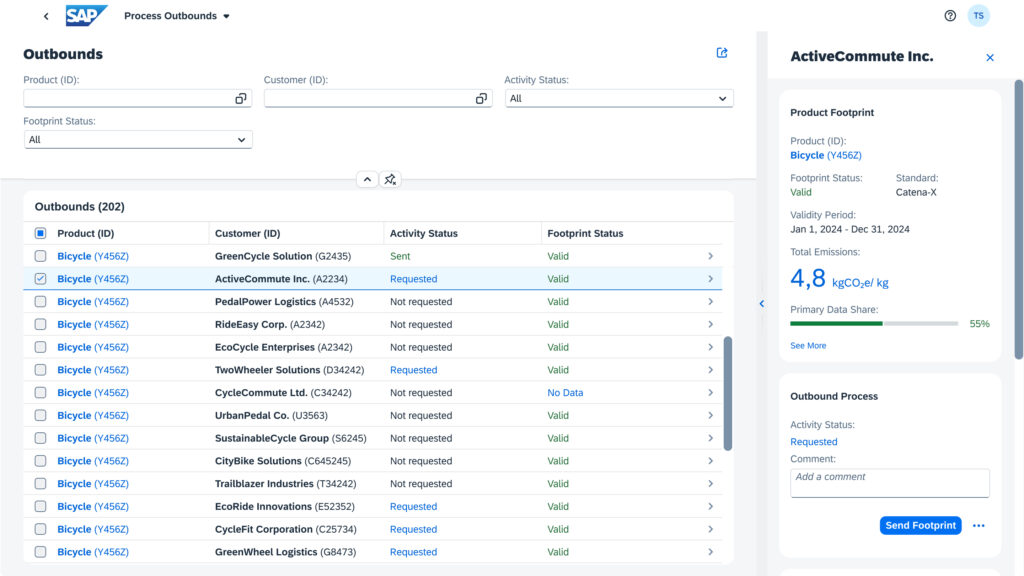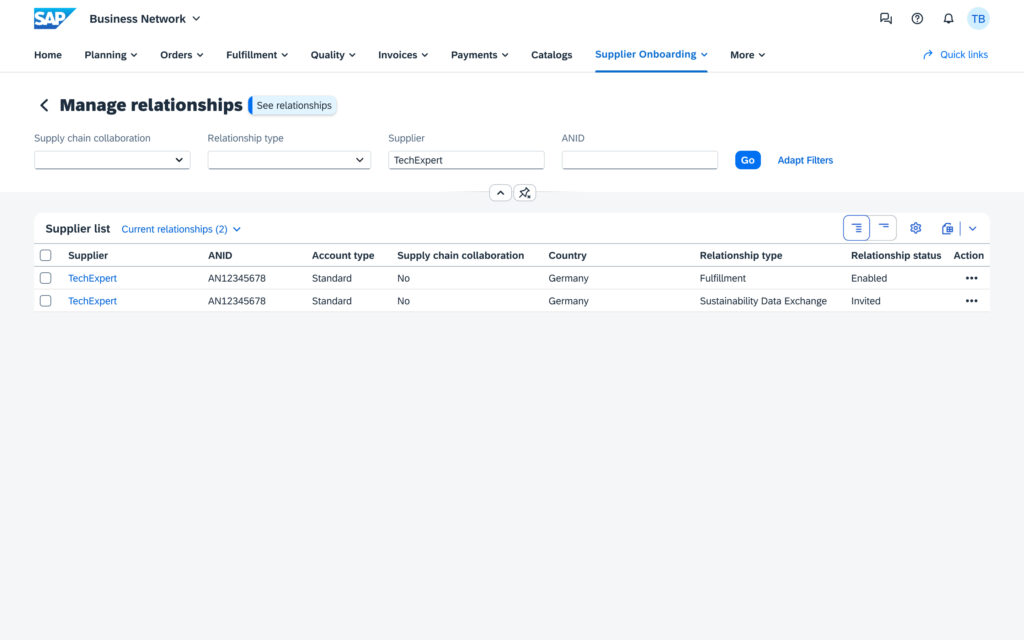Next month, business leaders, government officials, policymakers, and innovators from all over the world will get together for COP29 to tackle the most pressing sustainability challenges. This is where innovative technology plays a huge role in efficiently acting on climate goals and achieving net-zero emissions. To transform the way companies collect, share, and analyze carbon-related data, SAP has announced the general availability of SAP Sustainability Data Exchange, a SaaS application that can enable standardized carbon data sharing.
While it’s relatively straightforward to control and reduce a company’s direct emissions, mitigating those that arise along the whole supply chain requires a lot of time, collaboration, and data sharing. One major challenge companies face is outdated tools, such as spreadsheets or questionnaires, and disconnected processes to collaborate with their network. Furthermore, the lack of standardized carbon footprint calculations and exchange methods has led to a variety of different approaches to collect and report on data, resulting in many organizations relying only on industry averages rather than actual numbers.
Managing carbon to accelerate a net-zero future makes measurability critically important. That is where technology and innovation can make a real difference. With SAP Sustainability solutions and our ERP-centric, cloud-based, AI-enabled approach, we support our customers to use integrated sustainability data and embed it holistically into their core business processes.
What Is SAP Sustainability Data Exchange?
SAP Sustainability Data Exchange helps facilitate standardized carbon data exchange between partners along the supply chain, supporting organizations to move from estimates to actuals in their upstream emission data. The application allows users to share emissions data to help implement their net-zero strategy and take climate action by identifying products or processes with high potential for CO2 reduction, avoiding double emissions counting, and optimizing footprints with actual supplier data. It helps drive scalability, standardization, and trust in carbon data exchange across the supply chain.

SAP Sustainability Data Exchange is seamlessly embedded into the SAP landscape, connecting to SAP S/4HANA for master data replication and integrating with SAP Sustainability Footprint Management to help enable accurate product carbon footprint calculations on a large scale.
To Harness the Power of Networks, Standardization Is Key
To be able to exchange carbon footprint values, standardization and interoperability with industry networks and frameworks are key, as they foster co-innovation and collaboration without a loss of data sovereignty. SAP Sustainability Data Exchange is interoperable and compliant with the new standards set by the automotive network Catena-X and the Partnership for Carbon Transparency (PACT) by the World Business Council for Sustainable Development (WBCSD).
PACT, for example, developed the global standard for calculating and exchanging consistent, comparable, and credible emission data that occurs along a company’s value chain and is outside its direct control, known as scope 3 emissions. Catena-X works closely with PACT to establish a joint standardization foundation on carbon accounting and sharing while adding industry-specific extensions.
Catena-X has certified SAP Sustainability Data Exchange for its sustainability use case. WITTE Automotive, a tier 1 automotive supplier, was one of the first customers to harness the application when it faced challenges in calculating its product carbon footprint in a standardized way to exchange product carbon footprint values with both customers and suppliers. With SAP Sustainability Data Exchange, WITTE Automotive can integrate the supplier footprints it receives through the Catena-X network, precisely calculate the product carbon footprint of parts and components, and publish the calculated values of its finished products within the network.
“This open and collaborative data ecosystem perfectly reflects SAP’s vision to enable every organization to become a network of intelligent, sustainable enterprises and gives the companies leveraging the Catena-X automotive network access to a broad portfolio of SAP solutions, from enabling the traceability of products across multiple parties in the supply chain to tracking and calculating the scope 3 emissions.”
– Christian Klein, CEO, SAP SE
In addition, SAP Sustainability Data Exchange embraces the power of SAP Business Network, leveraging the depth and breadth of a global network trusted by millions of businesses, through which nearly US$6 trillion of annual commerce is executed via over 750 million transactions.

A Core Pillar of the Green Ledger
Having an accurate view of carbon emissions across the entire supply chain not only enables data exchange but can have a real impact on the bottom line. Many companies want to make carbon an integral part of the corporate balance sheet, measuring and managing it with the same precision as cash – therefore treating carbon like money. The use of SAP Sustainability Data Exchange and SAP Green Ledger, which will be generally available at the end of 2024, can provide a strong basis for making financial decisions.
Start the SAP Sustainability Data Exchange product tour here to learn more.
SAP Sustainability solutions can support even more than carbon management and environmental, social, and governance (ESG)-related disclosures. Check out our sustainability page to learn more about support for operational compliance and material transition and subscribe to the sustainability newsletter to stay up-to-date.
Gunther Rothermel is chief product officer and co-GM for SAP Sustainability.



